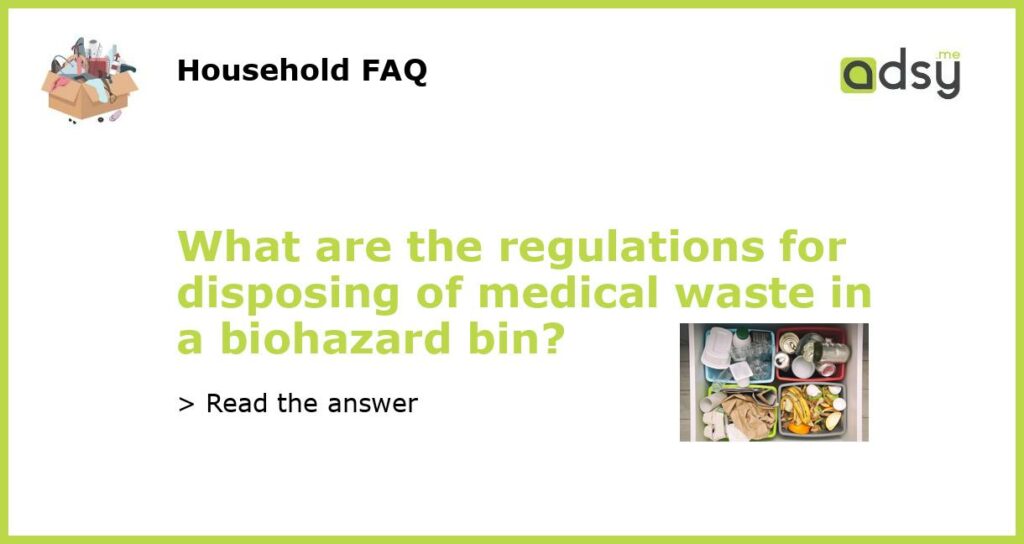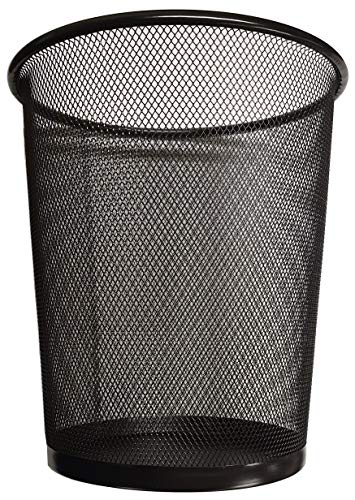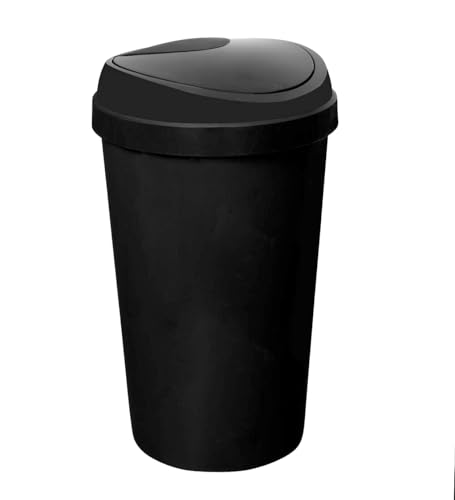Understanding the regulations for disposing of medical waste in a biohazard bin
Medical waste is a crucial aspect of the healthcare industry, and proper disposal is essential to protect public health and the environment. One of the primary methods of disposing of medical waste is through biohazard bins. These bins are specifically designed to safely collect and store potentially infectious materials until they can be properly treated or destroyed. In order to ensure the safe disposal of medical waste, there are strict regulations in place that dictate how biohazard bins should be used and maintained.
Types of medical waste that require disposal in a biohazard bin
Before delving into the regulations, it’s important to understand what types of medical waste should be disposed of in a biohazard bin. Medical waste includes various materials that are generated in healthcare settings, such as hospitals, clinics, and laboratories. Some common examples of medical waste that should be disposed of in a biohazard bin include:
- Contaminated gloves, masks, and gowns
- Sharps, such as needles and scalpels
- Pathological waste, such as human tissues and organs
- Microbiological waste, such as cultures and specimens
- Pharmaceutical waste, including expired or unused medications
Regulations for the disposal of medical waste in a biohazard bin
Regulations for the disposal of medical waste in a biohazard bin can vary by country, state, and even local jurisdiction. However, there are some common guidelines that establishments must follow to ensure compliance. These regulations typically cover the following areas:
- Proper labeling: Biohazard bins must be clearly labeled with the international biohazard symbol and the words “Biohazard” or other appropriate warning signs. This helps to alert individuals to the potential dangers associated with the contents of the bin.
- Secure containment: Biohazard bins must be designed to safely contain and prevent leakage or spillage of the waste. They should have tight-fitting lids or covers to prevent any accidental exposure.
- Segregation of waste: Different types of medical waste should be segregated to prevent cross-contamination. For example, sharps should be disposed of in puncture-resistant containers, while liquids should be kept separate.
- Regular collection and disposal: Biohazard bins should be emptied regularly to prevent overflow. Once full, the contents should be collected and disposed of by a licensed waste management company that specializes in medical waste disposal.
- Record-keeping: Facilities must maintain accurate records of medical waste disposal, including the type and quantity of waste, as well as the date and method of disposal. This information may be required for regulatory compliance or in the event of an audit.
Biohazard waste disposal regulations in the United States
In the United States, medical waste disposal is primarily regulated at the state level, although guidelines and best practices are set by federal agencies, such as the Occupational Safety and Health Administration (OSHA) and the Environmental Protection Agency (EPA). The OSHA Bloodborne Pathogens standard provides guidelines for the safe handling and disposal of biohazardous waste. Additionally, individual states have their own specific regulations that healthcare facilities must adhere to. These regulations typically outline requirements for labeling, containment, transportation, and disposal of medical waste.
Penalties for non-compliance with biohazard waste disposal regulations
Non-compliance with biohazard waste disposal regulations can have serious consequences for healthcare establishments. Penalties may include fines, legal action, or suspension of operations. Additionally, improper disposal of medical waste can pose significant health risks to individuals who come into contact with it, as well as harm to the environment. Therefore, it is vital for healthcare facilities to stay up-to-date on the latest regulations and ensure strict adherence to proper waste disposal procedures.






